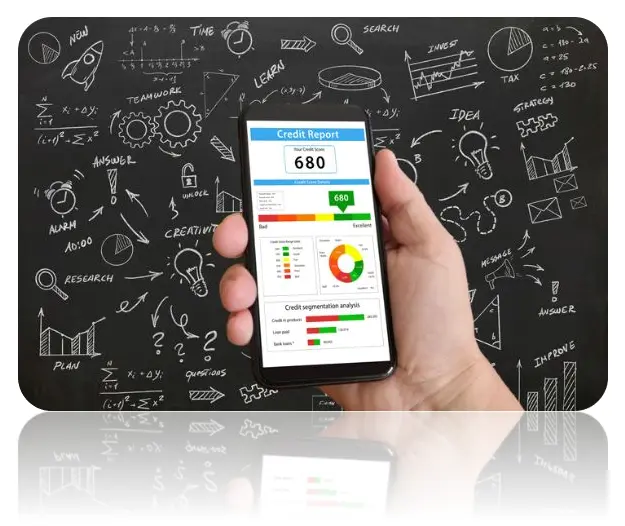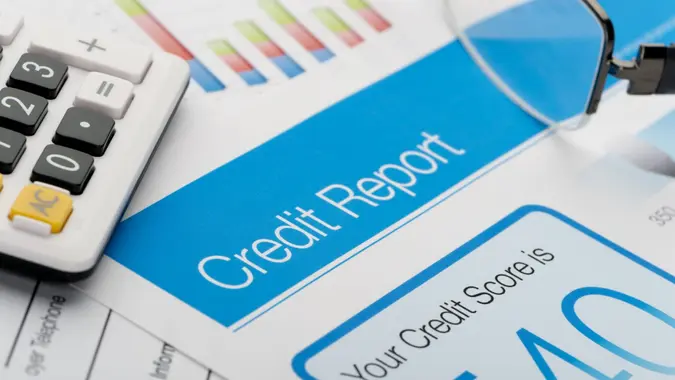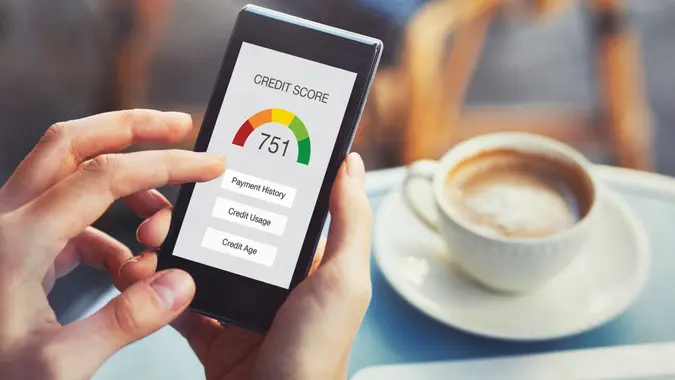How to Use a Credit Card to Build Credit Fast

Commitment to Our Readers
GOBankingRates' editorial team is committed to bringing you unbiased reviews and information. We use data-driven methodologies to evaluate financial products and services - our reviews and ratings are not influenced by advertisers. You can read more about our editorial guidelines and our products and services review methodology.

20 Years
Helping You Live Richer

Reviewed
by Experts

Trusted by
Millions of Readers
One of the most challenging catch-22s in the personal finance world is that you need good credit to get credit cards and loans, but you can’t build your credit until you borrow money.
The good news is that even people with bad credit or no credit can use credit cards to make themselves more attractive to lenders.
Here’s how in five steps.
Step 1: Choose the Right Credit Card
If you have bad credit or no credit, your best option is also probably your only option — a secured credit card designed for people in precisely your situation. Credit card companies issue secured cards to borrowers whose applications they would otherwise reject. Instead of extending a line of credit, the bank eliminates risk by requiring the applicant to put down a deposit, which serves as the card’s credit limit.
Students looking to establish credit can apply for student credit cards, which typically have lower credit limits and higher interest rates but offer young borrowers a deposit-free way to build a strong credit history.
If you have a modest credit profile that you want to improve into a stellar one, choose a starter rewards card with no annual fee.
Tip: Avoid store cards with high interest rates — they’re easy to get but can be risky if not managed carefully.
Step 2: Use the Card Regularly (But Carefully)
Use your new card to make modest but regular purchases like gas, groceries or streaming subscriptions.
Never charge more in a month than you can afford to pay off. If you pay your statement balance in full, you won’t pay finance charges. If you pay less than the full amount, you’ll pay north of 20% in perpetually compounding interest designed to trap you in debt for life.
Step 3: Pay Your Bill on Time Every Month
By paying every bill on time every month, you’ll establish a history of making on-time payments, which accounts for 35% of your score — the most consequential of all factors. That path will lead to cards with better terms, higher limits, lower rates and rich rewards as your score improves. Set up automatic payments — preferably for the statement balance but at least for the minimum owed — and set payment reminders on your calendar.
Remember, just one late payment can tank your score and erase any gains you made up to that point.
Step 4: Keep Your Credit Utilization Low
The No. 2 biggest part of your score is your credit utilization ratio — the amount of available credit you’re using. For example, if your credit limit is $1,000 and you’re using $500, your utilization ratio is 50% — and that’s too high. Lenders like to see a ratio under 30%, but lower is better.
Tip: Instead of waiting for your statement balance, make small payments throughout the month to keep your balance low.
Step 5: Don’t Apply for Too Many Cards at Once
Applying for a new credit card — or any kind of loan — triggers a hard inquiry, which can lower your score. The hit is usually modest and temporary — unless you have multiple hard pulls in a short time, which can make you appear desperate for money and be a red flag for lenders.
In the beginning, stick with one starter card and build a good payment history while maintaining a low utilization ratio.
After six months or a year of responsible use, then consider applying for better cards.
Why Credit Cards Help Build Credit
Credit card issuers are obligated to report your account activity each month to the three credit bureaus — Experian, Equifax and TransUnion.
They report actions like
- If you paid on time.
- How much of your open credit you’re using.
- Whether your balance has increased or decreased.
- How long you’ve had the card.
This information is the basis of your credit score. Using a credit card responsibly can improve your score.
How Long Does It Take to Build Credit with a Credit Card?
If you’re starting with no credit history, you can reasonably expect to achieve a fair credit score of 580 to 669 in about six months with responsible use. Most people can improve to a good score of 670 to 739 in about a year.
Factors that affect your timeline:
- Whether you consistently make on-time payments.
- Whether you maintain a low balance compared to your open credit.
- Whether you have other debt (like student loans).
Mistakes to Avoid When Using a Credit Card to Build Credit
Avoid these common pitfalls during your credit-building journey.
- Maxing out your card or even approaching your credit limit. High balances hurt your score.
- Paying late — even one late payment can send your score spiraling downward.
- Paying only the minimum balance — this builds debt, not credit.
- Applying for several cards in a short time. Too many inquiries too close together can hurt your score.
Tip: Your credit card is a tool to build credit, not free money.
FAQ
- How often should I use my credit card to build credit?
- The frequency doesn't matter as much as your ability to repay every dollar you charge every month. Start with a few small purchases per month.
- Can I build credit if I pay off my credit card right away?
- Yes. The best way to build credit is to establish a record of on-time monthly payments. When or how often you pay doesn’t matter, as long as you pay your statement balance in full every billing period.
- Is it better to pay in full or leave a small balance?
- It’s best to pay your statement balance in full every month and never carry a revolving balance.
- Do secured credit cards build credit faster?
- Secured cards don’t build credit any faster than traditional cards, but they offer an entry point for borrowers who don’t have sufficient credit for approval with a standard card.
 Written by
Written by  Edited by
Edited by 






















